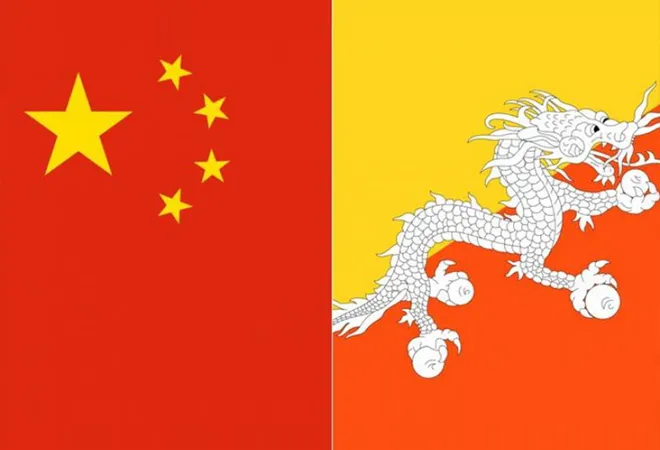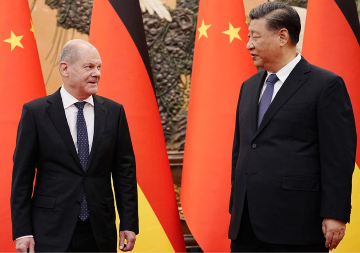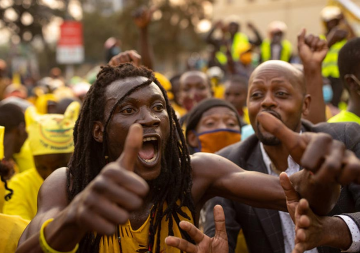Foreign phrases often convey concepts that would otherwise make for clunky translations. The French term,
, means something that has already happened, leaving the affected no option but to accept it.
The Bhutan-China memorandum of understanding (MOU) of October 14 fits this description. The MOU speaks of a three-step road map for a settlement of the China-Bhutan boundary. But the reality is that China has already occupied or is in the process of occupying most areas of Bhutan that it claims. The MOU will only dress up the final outcome, while in reality, it is, well,
a fait accompli.
Like the Sino-Indian border, the entire 477-km Bhutan-China border is also disputed. Significant Chinese claims range from three areas in western Bhutan, including Doklam, three regions in the north, and a June 2020 reassertion of its claim to a large chunk of eastern Bhutan.
Like the Sino-Indian border, the entire 477-km Bhutan-China border is also disputed. Significant Chinese claims range from three areas in western Bhutan, including Doklam, three regions in the north, and a June 2020 reassertion of its claim to a large chunk of eastern Bhutan.
Border talks between the two sides began in 1984, and from the seventh round in 1990, China continued to push a “package proposal”, which would see it concede its northern claims with an area of 495 sq km, in exchange for Bhutan agreeing to China’s western claims, including 89 sq km of Doklam.
There were two reasons for this. First, adding territory in the west would help enlarge the narrow and strategic Chumbi Valley, and second, possession of Doklam would give it a military advantage over India. The Doklam area is not of particular strategic significance for Bhutan, but it is important for India since it gets the Chinese to the Zompelri (Jampheri) ridge, which gives them a commanding view of India’s Northeastern jugular, also known as the Siliguri Corridor.
By the 10th round of talks in 1995, the Bhutanese appeared willing to concede to the Chinese. But when the two sides met for their 11th round in November 1996, Bhutan backed off, and many believe that India played a role in this. So in 1998, China and Bhutan signed an agreement to freeze the border as of 1998, pending further talks.
Negotiations continued, but so did Chinese encroachment through the use of graziers and the construction of roads into the disputed territory. A round each of border and expert group talks took place in 2016 just before the Doklam crisis of June 2017. This was triggered by an Indian blockade in Bhutanese territory that was claimed by China to prevent the latter from building a several-km long road to a Royal Bhutan Army outpost on Zompelri ridge.
But no sooner had India and China negotiated disengagement at the end of August 2017 that Beijing redoubled moves to establish itself in the Doklam plateau. It simply altered its route to the ridge and began a massive military build-up which has featured accommodations for troops and helipads. China also began building a model village on the Mochu river and a road snaking south towards India, all in Bhutanese territory. The Bhutanese have remained silent spectators and New Delhi has chosen to look the other way.
Earlier this year, China expert Robert Barnett and his team revealed that, since 2015, the Chinese had been building a network of roads, buildings and military posts in the areas they claimed in northern Bhutan as well. In short, they were occupying whatever they claimed in Bhutan, without as much as a “by your leave” to the Bhutanese.
For the sake of form, border negotiations were resumed earlier this year which an official joint release claimed were in a “warm and friendly atmosphere”. It was here that the Chinese twisted the knife further by reviving their long-dormant claim for a large chunk of eastern Bhutan.
So far, Thimphu has successfully walked the tightrope between its two giant neighbours, even while making it clear that it would not like to play New Delhi off against Beijing.
Having the Chinese on the Zompelri ridge is not necessarily an unmitigated disaster for India. The Indian Army has strong positions in the ridges overlooking the Chumbi Valley, and the flat region in northern Sikkim offers an opportunity for offensive action to cut off the Valley from the rest of Tibet.
But for the Bhutanese, securing a comprehensive agreement on the border is of the highest priority. The problem for the tiny Himalayan kingdom is that, unlike, its neighbourhood, it is not very populous, with just some 750,000 people in an area of 38,000 sq km — a little smaller than Denmark but with one-seventh of its population. Its capacity to police its disputed borders is limited, as has been evident over the years that it has dealt with China.
In South Asia, China sees Bhutan, where it does not yet have an embassy, as the last frontier. Having made inroads into Indian pre-eminence in Nepal, Sri Lanka and Bangladesh, Beijing would like to challenge New Delhi’s special relationship with Bhutan as well. Recent events, including Doklam and the revival of its claim in the eastern region, can be seen as systematic Chinese pressure to push the Bhutanese to comply with its demands.
So far, Thimphu has successfully walked the tightrope between its two giant neighbours, even while making it clear that it would not like to play New Delhi off against Beijing.
But recent developments suggest a perception in Bhutan that there are limits to which it can depend on India for its security.
With New Delhi itself hard-pressed along the Line of Actual Control (LAC), it is unlikely to be of much help to Bhutan. On the other hand, a settled border could have many benefits, including Chinese investments and tourists.
This commentary originally appeared in The Hindustan Times




 PREV
PREV


